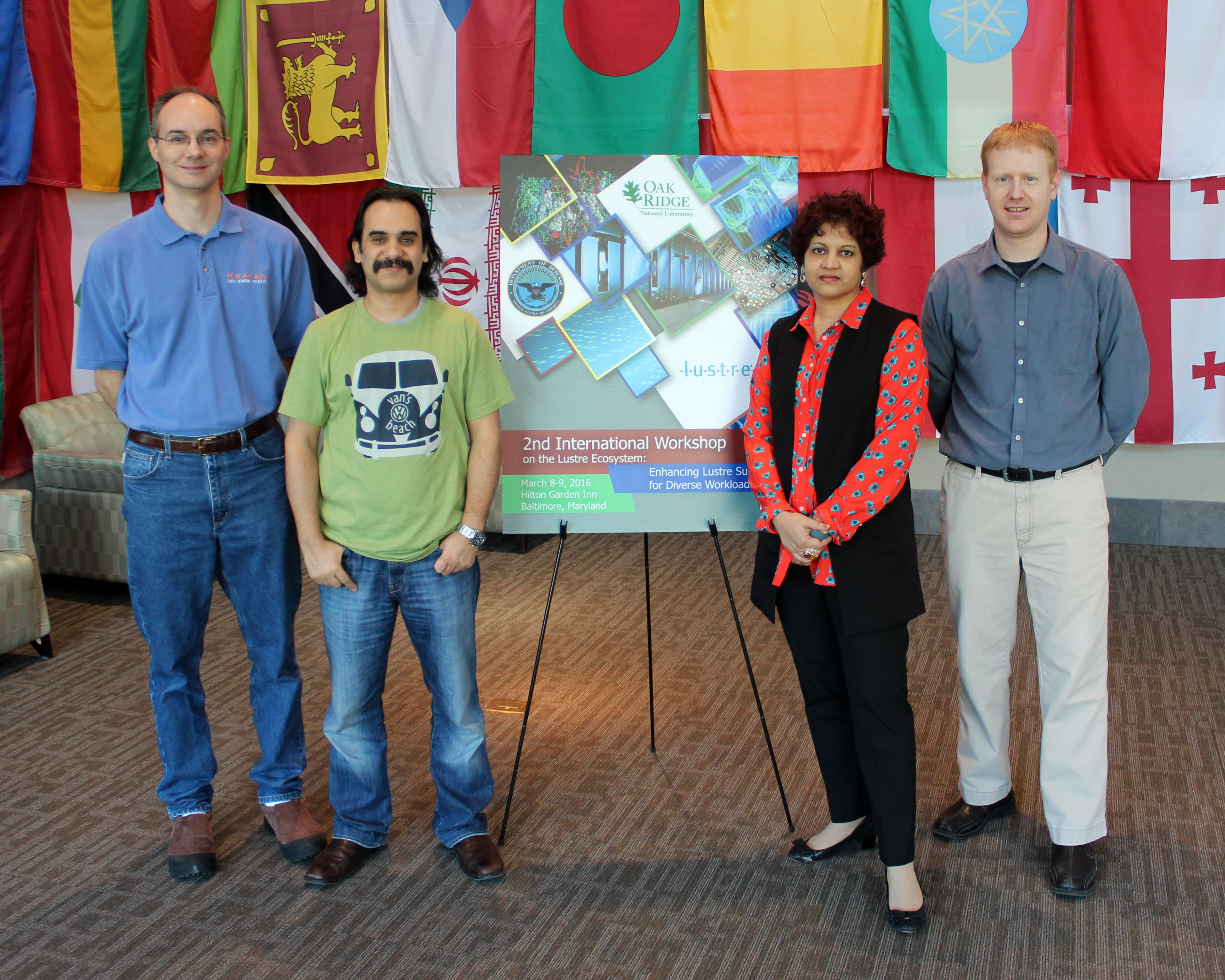
From left, Rick Mohr, JICS/NICS system administrator; Sarp Oral, file and storage systems lead, Technology Integration group, Oak Ridge National Laboratory (ORNL); Neena Imam, program director, Extreme Scale Systems Center, ORNL; and Michael Brim, research associate, Computer Science Research group, Computer Science and Mathematics Division, ORNL. This collaborative team provided leadership at the Second International Workshop on the Lustre Ecosystem, March 8–9, in Hanover, Maryland.
JICS/NICS Provides Expertise at the Second International Workshop on the Lustre Ecosystem
Rick Mohr, a high-performance computing system administrator at JICS and NICS, served as tutorials chair and as a member of the Technical Program Committee for the Second International Workshop on the Lustre Ecosystem: Enhancing Lustre Support for Diverse Workloads held March 8–9 in Hanover, Maryland.
“The Lustre parallel file system has been widely adopted by scientific high-performance computing centers as an effective system for managing large-scale storage resources,” according to the conference's Web site.
The goal of the workshop is to help explore improvements in performance and flexibility for Lustre beyond the traditional scientific applications workload. This year’s workshop was the second in a series that began last year.
Program co-chairs were Neena Imam, Michael Brim, and Sarp Oral of Oak Ridge National Laboratory (ORNL).
The conference featured tutorials from government agencies: Lawrence Livermore National Laboratory and ORNL; academia: the University of Tennessee, NICS, and Indiana University; and Industry: BP.
Mohr presented a tutorial titled “Managing Lustre on a Budget,” which focused on Lustre administration issues from the perspective of a small site. The slides from his tutorial are provided online. He also gave a technical presentation titled “Evaluating Progressive File Layouts for Lustre.*”
“The Progressive File Layout feature for Lustre is one that is currently under active development, and this feature will offer significant new flexibility in optimizing Lustre file layouts for various I/O [input/output] patterns,” Mohr said.
Slides for all tutorials and technical presentations are accessible through the conference Web site Agenda page.
*In reference to Mohr's technical presentation: This work was supported by the United States Department of Defense (DoD) and used resources of the Computational Research and Development Programs at ORNL.
Article posting date: 17 March 2016
About JICS: Established by the University of Tennessee and Oak Ridge National Laboratory, the Joint Institute for Computational Sciences (JICS) is a conduit for research collaborations and a provider of advanced computing resources. It also is an educator in cutting-edge computing focused on solving the most difficult problems in science and technology. JICS operates the National Institute for Computational Sciences (NICS), a leading academic supercomputing center and a major partner in the National Science Foundation's eXtreme Science and Engineering Discovery Environment (XSEDE).